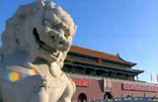Healthcare reform has macroeconomic implications
Updated: 2015-05-19 11:33
By PETER HILSENRATH(China Daily)
|
|||||||||||
The nation's healthcare sector has evolved erratically since 1949, when the People's Republic of China was founded.
Rural reform was an early priority and the first Five-Year Plan (1953-57) called for more hospital beds, doctors and antibiotics. It also recognized the necessity of a dual-track approach of Western medicine and traditional Chinese medicine.
Later, the use of "barefoot doctors" was cultivated, receiving widespread international recognition.
Late leader Deng Xiaoping's watershed shift toward markets had a profound effect on healthcare services. State support for hospitals, and healthcare more broadly, fell as China decentralized and turned to more organizational self-sufficiency.
Much of the Chinese population was left without adequate access to health services, especially in rural areas. Hospitals increasingly relied on sales of drugs, devices and high-technology services to augment their budgets. These problems were recognized and China subsequently sought to reengage the State in a strategy of improved public finance and provision of healthcare.
The severe acute respiratory syndrome outbreak of 2003 also underscored the need to improve public health services. Increased spending including for health insurance has improved China's healthcare sector.
But problems remain, including in accounting, finance and management.
There are important macroeconomic dimensions to healthcare reform in China that should also be recognized. A general consensus prevails about China's shift from an export and investment orientation toward consumption and services. The role of health insurance is important to this transition.
Studies have shown that improved health insurance affects consumption as the need for precautionary savings falls. Increased spending on health insurance also improves the equity of resource allocation in China.
The relatively recent establishment of two urban and one rural insurance programs has been an important achievement. But while widespread, this insurance is shallow and Chinese consumers still save for a rainy day, particularly as healthcare costs rise.
The advantages of more reliance on health insurance for healthcare finance go further. Lower savings and higher consumption rates blunt the impact of slower growth on improving living standards.
And healthcare has been labor-intensive, offering the prospect of a wide range of good jobs for increasingly educated young Chinese. Yet there are risks to this scenario. Healthcare has historically suffered from low productivity gains. China will consign itself to lower growth rates in the long run unless it develops a different kind of health sector, one that relies more on technology than the prevailing hospital-centric and labor-intensive approaches.
The primary output should be health, not hospital use, physician visits or any other intermediate service. Opportunities exist to leapfrog more developed countries with new technology and organization. Use of electronic medical records, mobile communications and monitoring technology alongside computer-assisted diagnosis and treatment hold promise for improving efficiency in production.
Another even more important issue in the long run is efficiency in resource allocation. This involves identification of health services that are not worth paying for. No society can afford everything of benefit that technology can offer. Drawing the line about which services are covered by insurance and which are not is difficult.
Insurance beneficiaries will not be very constrained by the expense of others. Robust institutions are necessary to cope with such important decisions. China is better-placed to make these allocations than the United States, where great discomfort exists concerning public intervention in medical choice.
China's more coherent social fabric will help address these daunting challenges that are sure to come. Expect healthcare reform and its alignment to structural adjustment to feature in China's 13th Five-Year Plan (2016-20).
The author is Joseph M. Long Chair of Healthcare Management and Professor of Economics, University of the Pacific, Stockton, California.
Related Stories
Dengue outbreak exposes healthcare management woes 2015-05-14 07:44
Private-sector influence must be prevented in healthcare 2015-05-12 10:34
Standards rising for elderly healthcare 2015-05-07 07:42
Siemens healthcare unit probed by China regulator for bribery 2015-05-04 09:53
Li Bin: people need to benefit from healthcare reform 2015-04-21 19:05
Cui Li gets a look at healthcare reforms in Guizhou 2015-04-17 19:17
Today's Top News
China, Ireland to boost trade and energy ties
Alibaba denies luxury group's counterfeit claim
China home prices fall in April
China to further improve public hospital services
Premier Li says talks with Modi 'meet expectations'
PBOC confirms debt-swap plan
Italy reports 3,600 migrant rescues in two days
Britain names 'BRIC' creator Jim O'Neill as commercial secretary
Hot Topics
Lunar probe , China growth forecasts, Emission rules get tougher, China seen through 'colored lens', International board,
Editor's Picks

|

|

|

|

|

|






